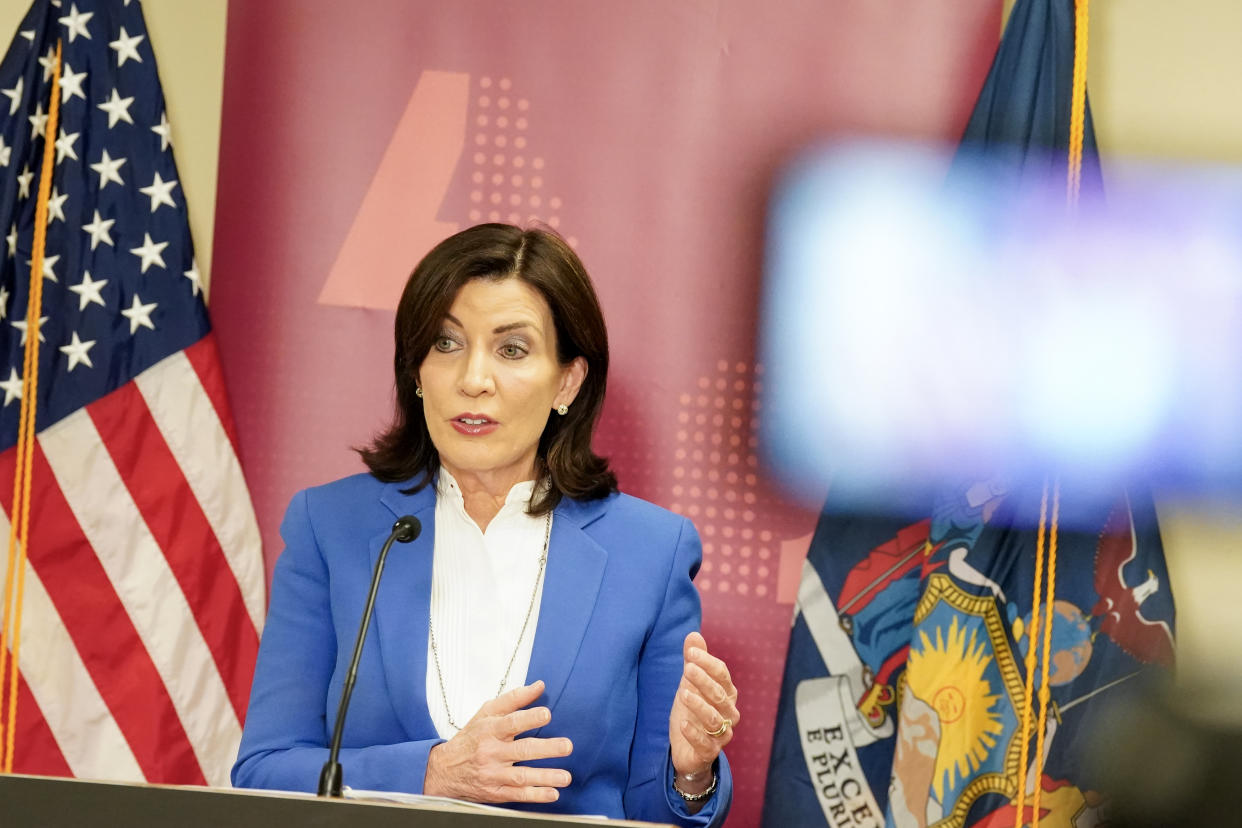New York Has a Budget Trick to Try on the Federal Government

- Oops!Something went wrong.Please try again later.
ALBANY, N.Y. — Facing increased Medicaid enrollment and a cash crunch across New York’s health care system, Democrats in Albany hope to employ a maneuver that they say will allow the state to generate billions of dollars a year essentially out of thin air.
The proposal takes advantage of a loophole in the Medicaid reimbursement process that allows states to bill the federal government for billions of dollars.
Here’s how it could work: New York could create a tax aimed at managed care organizations such as Aetna and UnitedHealthcare that would force them to pay a hypothetical $1 billion into state coffers. The state would then repay the insurers through Medicaid, using $500 million in state funds and $500 million more in matching federal funds — leaving the state an extra $500 million for its budget.
Sign up for The Morning newsletter from the New York Times
Because whatever the state spends on Medicaid is reimbursed by the federal government, the loophole creates the potential for a legal shell game where Medicaid insurers come out even, the state makes money and the federal government loses it.
Variations of this trick have been around for years, with 18 states using some type of tax on managed care organizations to increase their share of federal reimbursements. But last year, as California faced vast budget gaps, state leaders advanced an aggressive version of the scheme that narrowly drew from and benefited Medicaid insurers, resulting in a head-spinningly circular transaction worth billions of dollars.
Now Democrats in New York are eyeing California’s maneuver, seeing the move as an easy way to inject billions of dollars into the state’s health care spending as it negotiates the overall state budget.
New York spends more per capita on health care than any other state in the country, according to the Centers for Medicare & Medicaid Services, an amount that is projected only to grow because of rising enrollment and demographic shifts.
Gov. Kathy Hochul has proposed cutting $1.2 billion out of the state’s health care budget, largely out of long-term care and related programs, in her executive budget, a plan that would nonetheless increase health care spending by roughly $3 billion.
Democrats in the Legislature have railed against these cuts, which are also fiercely opposed by the powerful Greater New York Hospital Association and its allies in labor who have collectively spent hundreds of thousands of dollars on recent lobbying and public awareness campaigns.
Hospitals are asking for an increase in Medicaid reimbursement rates that they say will help to shore up a crisis in safety-net hospitals, and ensure that Medicaid patients receive better care.
It is not clear how exactly New York intends to use any funds derived from the Medicaid plan. Assembly Speaker Carl Heastie, a Democrat, said the funds would be used for “medical purposes” and suggested that some of the money might be held back to offset future financial risk.
Amy Paulin, chair of the Assembly Health Committee, said she supported the plan because it had the potential to help address systemic disinvestment that had left many safety-net facilities on the brink of collapse. “We are in a terrible situation now, and a large part of that is due to the fact that Medicaid underfunds every single procedure,” she said.
She added, “The question to me is why we would leave federal dollars on the table?”
There is no guarantee that the federal government will approve New York’s arrangement, and some skeptics caution that balancing the budget on that assumption could exacerbate financial woes.
Although the Centers for Medicare & Medicaid Services approved California’s tax through 2026, it warned that it regarded the maneuver as a violation of the spirit of the program, and said in a letter accompanying the approval that the agency intended to propose a regulation “to address this issue.”
The Centers for Medicaid & Medicare Services declined a request to comment on New York’s proposal.
But Hochul said Thursday that she believed the federal government was genuine in its interest to close the loophole California had found, and that she hoped she could persuade federal officials to hold off until New York could also take advantage.
“We’ve been very, very persistent in asking them to give us the same accommodation before anything closes,” Hochul said, adding that the effort included communications with the “highest levels of the White House.”
It was not a yes yet, the governor said, “but they’ve heard us.”
Even so, the specter of the loophole soon closing only heightened the concerns of some fiscal watchdogs.
“The best they can hope for is a short-term windfall,” said Bill Hammond, a researcher with the Empire Center who has deeply investigated the state’s health care spending. “But they’re talking about using it to make changes to the Medicaid rate structure. That would be ongoing.”
Andrew Rein of the nonpartisan Citizens Budget Commission agreed, saying: “You should not use short-term money for long-term needs. That is a prescription for fiscal instability or worse.”
But lawmakers in California shared in Hochul’s optimism, saying they are not at all clear that the money will soon run out.
“That rumor has been there for a while, and CMS has never pulled out,” said Sen. Caroline Menjivar, a Democrat who leads California’s health and human services budget subcommittee. She added that California expects to receive $1.5 billion more than the state requested the past year.
“That doesn’t tell me that CMS is pulling the rug from underneath us,” she said.
The biggest concern, Menjivar said, was how the political environment in Washington would change under a potential second Trump presidency.
“Whatever happens in November could alter a lot,” she said. “The federal administration, if it changes, is not going to look to California as a friend.”
The same could certainly be said for New York.
c.2024 The New York Times Company

